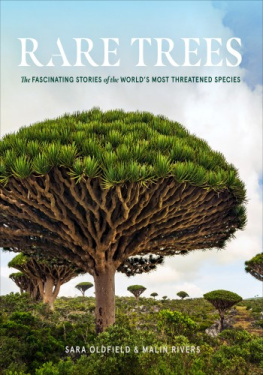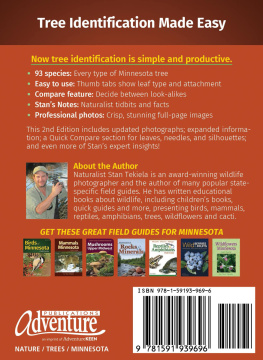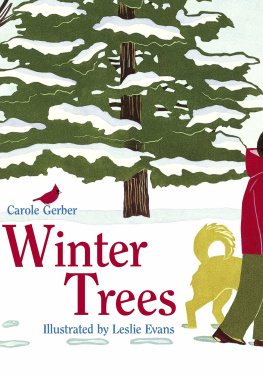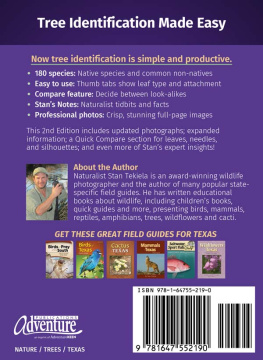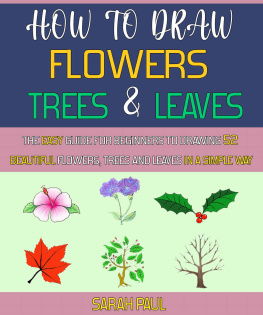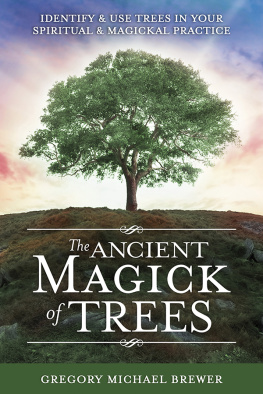Ive lived with trees, studied trees, and designed with trees my whole life. This is the best work for tree identification I have ever seen. Mikolass unique approach takes the complexity out of the undertaking and imparts a familiarity with each tree that is normally only hard-won through experience.
Laurie E. Klenkel, PLA, Landscape Architect

Copyright 2017 by Mark Mikolas
All rights reserved
For information about permission to reproduce selections from this book, write to Permissions, The Countryman Press, 500 Fifth Avenue, New York, NY 10110
For information about special discounts for bulk purchases, please contact W. W. Norton Special Sales at specialsales@wwnorton.com or 800-233-4830
All maps from E. L. Little, Jr., Atlas of United States Trees, Vol. 1: Conifers and Important Hardwoods. U.S. Department of Agriculture Miscellaneous Publication 1146 (1971). Via gec.cr.usgs.gov/data/little/
Book design by Endpaper Studio
Production manager: Devon Zahn
Cover photographs by Mark Mikolas
Cover design by Endpaper Studio
The Library of Congress has cataloged the printed edition as follows:
Names: Mikolas, Mark, 1945author.
Title: A beginners guide to recognizing trees of the Northeast / Mark Mikolas.
Description: New York, NY : The Countryman Press, [2017]
Identifiers: LCCN 2017025434 | ISBN 9781682681107 (pbk.)
Subjects: LCSH: TreesNortheastern StatesIdentification.
Classification: LCC QK117 .M55 2017 | DDC 582.16dc23
LC record available at https://lccn.loc.gov/2017025434
ISBN 978-1-68268-111-4 (e-book)
The Countryman Press
www.countrymanpress.com
A division of W. W. Norton & Company
500 Fifth Avenue, New York, NY 10110
www.wwnorton.com
CONTENTS
Much of what I have learned over the years has come from my good friends Jeff Nugent and Bill Guenther. With them I have hiked many miles throughout the Northeast, always observing and talking about the trees we encountered. My thanks also go out to my many other hiking friends for their patience both with my persistent questioning and my many stops to photograph.

WHY DOES THE WORLD NEED ANOTHER TREE GUIDE?
A large number of guides for tree identification already exist. Almost all depend on leaves and other features, such as fruit, nuts, buds, flowers, bud scars, and silhouettes. Many guides include hundreds of trees, and they often cover very large geographies, such as the Eastern United States or the whole country. In addition, many take pride in emphasizing fine distinctions between closely related species.
What is wrong with these guides? Nothing. Except that they can be very confusing and hard to use for someone unfamiliar with tree identities to begin with. As Philip Werner writes in the blog SectionHiker: I learned yesterday that tree identification for novices is not as easy as I had hoped. I managed to identify a few tree species but then things got real confusing. There were a lot of species I simply couldnt identify in the tree book I had brought along with me.
There are other problems. Northern deciduous trees have no leaves in the winter; fruit, nuts, and flowers appear only at a certain time of year; if a trees branches are far above your head, you cannot see small details like buds or bud scars; silhouettes vary enormously depending on the specific conditions in which a tree grows; and even trying to identify a tree by its leaves can be confusing when faced with the variety of options in a thorough guide. For instance, the Checklist of United States Trees, published by the U.S. Forest Service, lists more than 150 oaks. A popular tree guide to Eastern trees lists over 40 oaks, still an overwhelming number for beginners and even seasoned amateur naturalists.
Why does the world need another tree guide? As small children, we all learned the names of many things, such as animals, fruits, and dinosaurs, but no cultural experience familiarized us with the names of trees. Many adults love trees, but may feel a little guilty about not recognizing them by name. Those who would like to be able to recognize more trees need an easy resource to begin learning about them. This guide intends to fill that need.
HOW CAN TREE IDENTIFICATION BE MADE EASIER?
We make identification easy by restricting the geography covered, by reducing the number of trees we focus on, by selecting the key features needed to identify a tree, and by avoiding fine distinctions.
HOW WE RESTRICT THE GEOGRAPHY
We reduce the number of trees we focus on by restricting the geography to one area where similar types of trees can be found. This book covers the Northeast, but as it turns out, there are many different combinations of states that are called the Northeast: the Census Bureau has one, the Association of American Geographers has another, U.S. Fish and Wildlife has yet another, the Library of Congress has its own, and so on. The definition we are using, shown below, follows that of the World Geographical Scheme for Recording Plant Distributions, which maps a common zone in which similar plants and trees can thrive. This zone stretches from Maine south to West Virginia and west to Indiana and Michigan, as shown on the map.

The Northeast, as defined by the World Geographical Scheme for Recording Plant Distributions.
HOW WE REDUCE THE NUMBER OF TREES WE FOCUS ON
You do not have to learn every tree in the forest to recognize most of them. In fact, the first dozen species of deciduous trees in this book (those that lose leaves in the winter) together make up about 95 percent of all the deciduous trees in the Northeast. The eight conifers covered here represent nearly 100 percent of all conifers to be encountered in the Northeast. That means that if you learn 12 deciduous trees and eight conifers, you will recognize the vast majority of the trees that you will encounter.
We also do not make fine distinctions between species. For instance, among others, there are white, black, green, and blue ashes, but by far the most prevalent is white ash, so that is what is included here. Likewise, not all trees commonly known as cedar are even in the same genus, but if you can identify one type of cedar, you will recognize the others as well. Thus we do not distinguish among them.
HOW WE SELECT THE KEY FEATURES NEEDED FOR IDENTIFICATION
Foresters can walk through a wood and identify which tree is which with little more than a glance. How do they do thateven in the winter, when there are no leaves? They almost unconsciously focus on a few keys to identification. These keys may include location, bark, color, form of growth, and so on. We use the same ability when we pick someone we know well out of a crowd of people, even if we cannot see their face.
For each tree, I have identified and then focused on those key factors that lead to easy identification. For instance, once you have learned that black cherry is the only tree whose bark looks as if burnt potato chips have been pasted all over itand you have seen some photos illustrating that factyou will ever after be able to identify black cherry trees and know that you are right. This approach is simple and straightforward, and it works year round.
Next page

